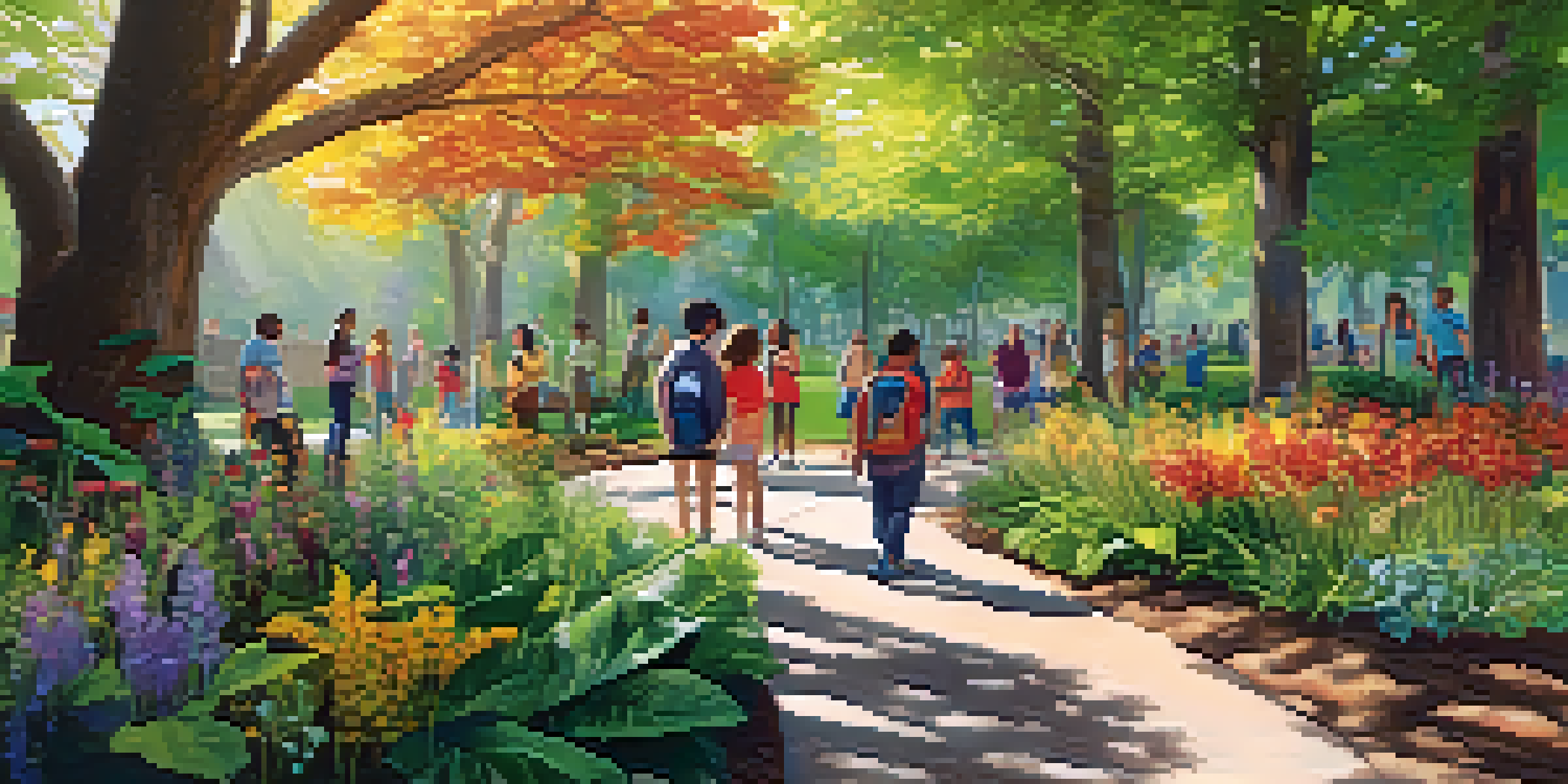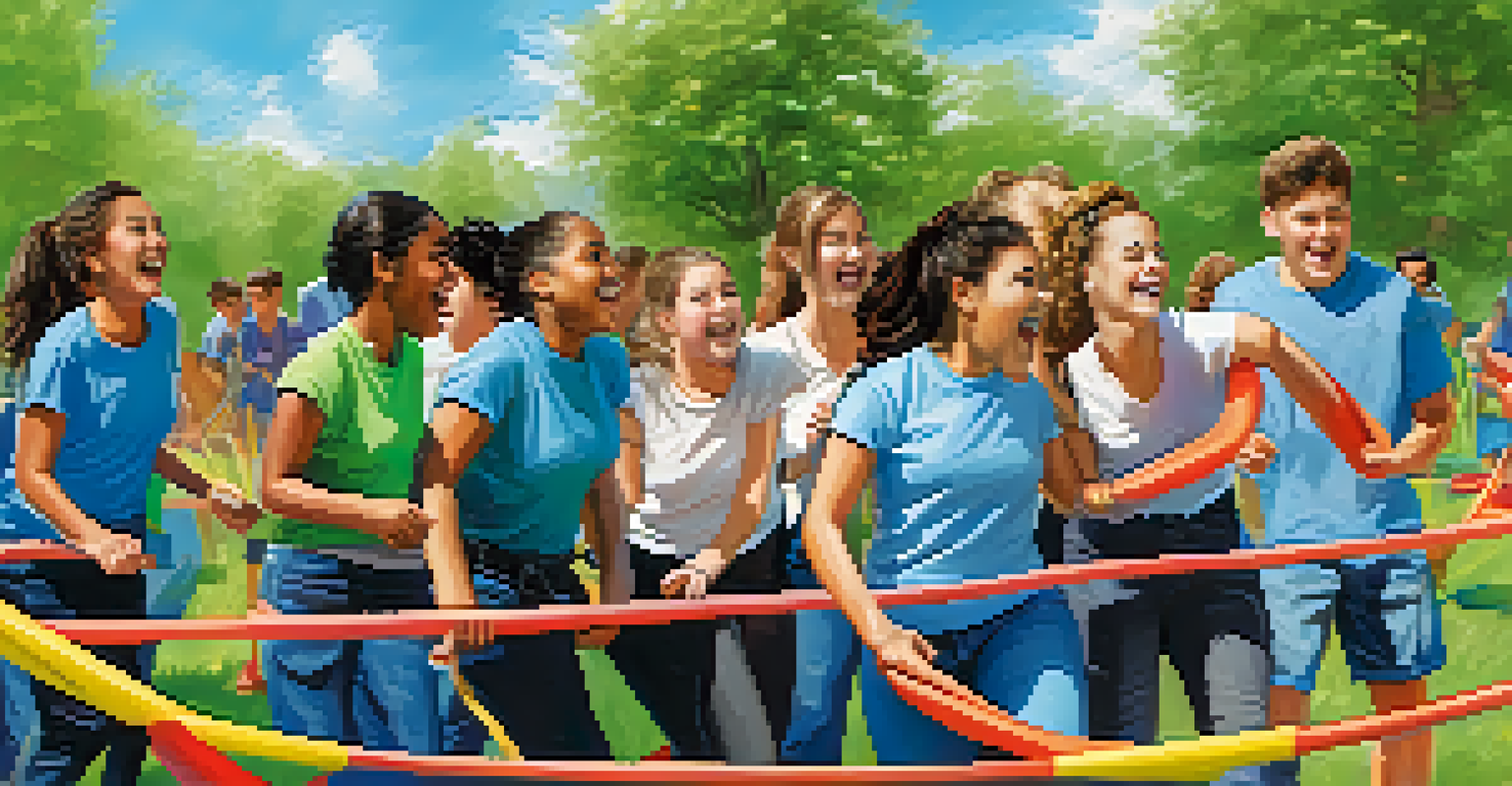Outdoor Learning Strategies for Special Needs Students

Understanding the Importance of Outdoor Learning
Outdoor learning provides a unique environment that can enhance the educational experience for special needs students. Being outside helps break the traditional classroom mold, allowing students to engage their senses in a way that indoor spaces often cannot. Nature can stimulate curiosity, creativity, and a willingness to explore, making learning more dynamic and enjoyable.
The best classroom and the richest cupboard is roofed only by the sky.
Moreover, outdoor settings can reduce anxiety and improve focus, which is particularly beneficial for students who may struggle in traditional learning environments. Fresh air and natural light can boost mood and energy levels, creating an atmosphere conducive to learning. This shift in environment can often lead to breakthroughs in understanding and retention of information.
Another significant aspect is the opportunity for social interaction. Outdoor activities can foster teamwork and communication, essential skills for all students, especially those with special needs. By participating in group tasks, students can develop friendships and enhance their social skills in a supportive setting.
Incorporating Sensory Activities in Nature
Sensory activities can be particularly beneficial for special needs students, engaging their senses in a hands-on way. For instance, nature walks can be enriched with tactile experiences, like feeling the texture of leaves or the coolness of water. These activities not only stimulate learning but also help students become more aware of their surroundings.

Creating sensory bins filled with natural materials like sand, rocks, or pinecones can also provide a multi-sensory experience. Students can explore different textures, weights, and shapes, aiding in their cognitive and motor skill development. This tactile learning can be a fun and effective way to reinforce concepts taught in class.
Enhancing Learning in Nature
Outdoor learning environments stimulate curiosity and creativity, making education more dynamic for special needs students.
Additionally, incorporating sounds from nature, like bird calls or rustling leaves, can enhance auditory learning. Engaging students with various sensory experiences helps cater to different learning styles, making education more inclusive and accessible.
Utilizing Nature-Based Learning Activities
Nature-based learning activities can be tailored to meet the diverse needs of special needs students. Simple projects like planting a garden can teach responsibility and the scientific process while also providing a sense of accomplishment. Watching plants grow can be a rewarding experience that fosters patience and nurturing skills.
Play is the highest form of research.
Another engaging activity is nature scavenger hunts, which promote observation and critical thinking. Students can work in pairs or small groups, encouraging collaboration and communication. This fun, interactive approach keeps students motivated and invested in their learning.
Arts and crafts projects that utilize natural materials can also be a creative outlet. For example, students can create collages using leaves, flowers, or twigs, merging art with environmental education. These projects allow for self-expression and can help improve fine motor skills.
Promoting Physical Activity Through Outdoor Learning
Outdoor learning is a fantastic way to incorporate physical activity, which is essential for all students, especially those with special needs. Activities like hiking, biking, or even simple games can promote physical health while also enhancing coordination and balance. These physical activities can be adapted to suit varying abilities, ensuring everyone can participate.
For students who may have mobility challenges, activities can be modified to include wheelchair-friendly paths or gentle exercises that can be performed sitting down. This inclusivity allows every student to benefit from the physical aspects of outdoor learning. Engaging in physical activity also boosts endorphins, contributing to a positive learning environment.
Boosting Social Skills Outdoors
Group outdoor activities foster communication and teamwork, helping special needs students develop essential social skills.
Moreover, these activities can help reinforce lessons in a tangible way. For instance, measuring distances during a nature walk can teach math skills while simultaneously promoting exercise. This integration of physical and academic learning can enhance student engagement and retention.
Building Social Skills Through Group Outdoor Activities
Group outdoor activities provide a fantastic platform for students to develop and practice social skills. Team-building exercises, such as cooperative games or obstacle courses, encourage communication and collaboration among students. This is particularly beneficial for special needs students, who may struggle with social interactions in traditional settings.
By participating in these group activities, students learn the importance of teamwork, sharing, and problem-solving. These experiences can help build confidence and foster friendships, creating a supportive community among peers. Such social interactions are crucial for emotional and social development.
Additionally, structured outdoor activities can provide a safe space for students to express themselves and explore their identities. Engaging in discussions about group roles or strategies encourages critical thinking and self-awareness, vital components of social competence.
Creating Individualized Learning Plans for Outdoor Settings
Every student is unique, and this is especially true for special needs students. Therefore, creating individualized learning plans that incorporate outdoor learning strategies is essential. These plans should consider each student’s strengths, interests, and challenges, ensuring that the outdoor activities are accessible and beneficial.
For example, a student with sensory processing issues might thrive in a quiet garden space, while another may prefer a more dynamic environment, like a playground. By tailoring learning experiences to individual needs, educators can maximize engagement and learning outcomes. This personalization is key to fostering a love for learning.
Involving Families in Learning
Engaging families in outdoor activities strengthens bonds and creates a supportive learning environment at home.
Additionally, regular assessments and feedback from students can help refine these plans. Encouraging students to express what they enjoy or what they find challenging in outdoor settings can lead to more effective learning strategies. This adaptive approach ensures that learning remains relevant and meaningful.
Involving Families in Outdoor Learning Experiences
Involving families in outdoor learning experiences can enhance the overall impact of these strategies. Family members can participate in activities, reinforcing the lessons learned and fostering a supportive learning environment at home. For example, organizing family nature days can create shared experiences that strengthen bonds and improve communication.
Moreover, families can provide valuable insights into their child’s interests and challenges, allowing educators to tailor outdoor activities more effectively. This collaboration between home and school can lead to a more comprehensive understanding of each student's needs. Engaging families also helps build a community around outdoor learning.

By encouraging families to take part in outdoor learning, students may feel more motivated and supported. This shared enthusiasm for learning can create a positive feedback loop, where students are excited to learn, and families are eager to participate in their educational journey.